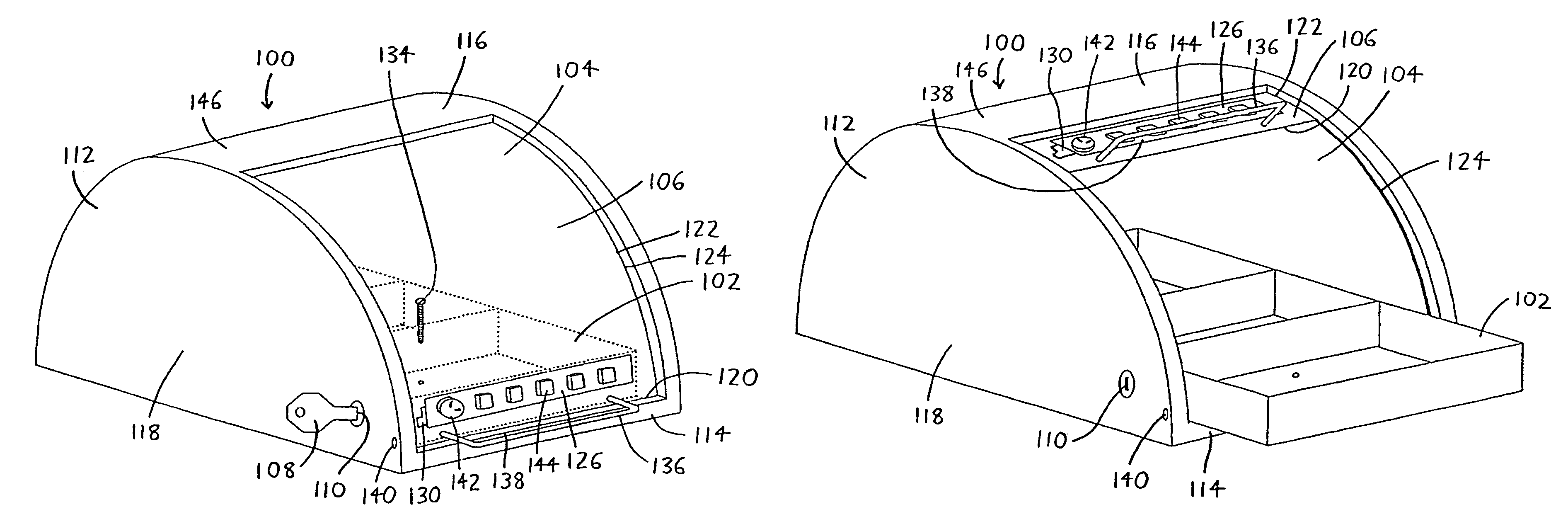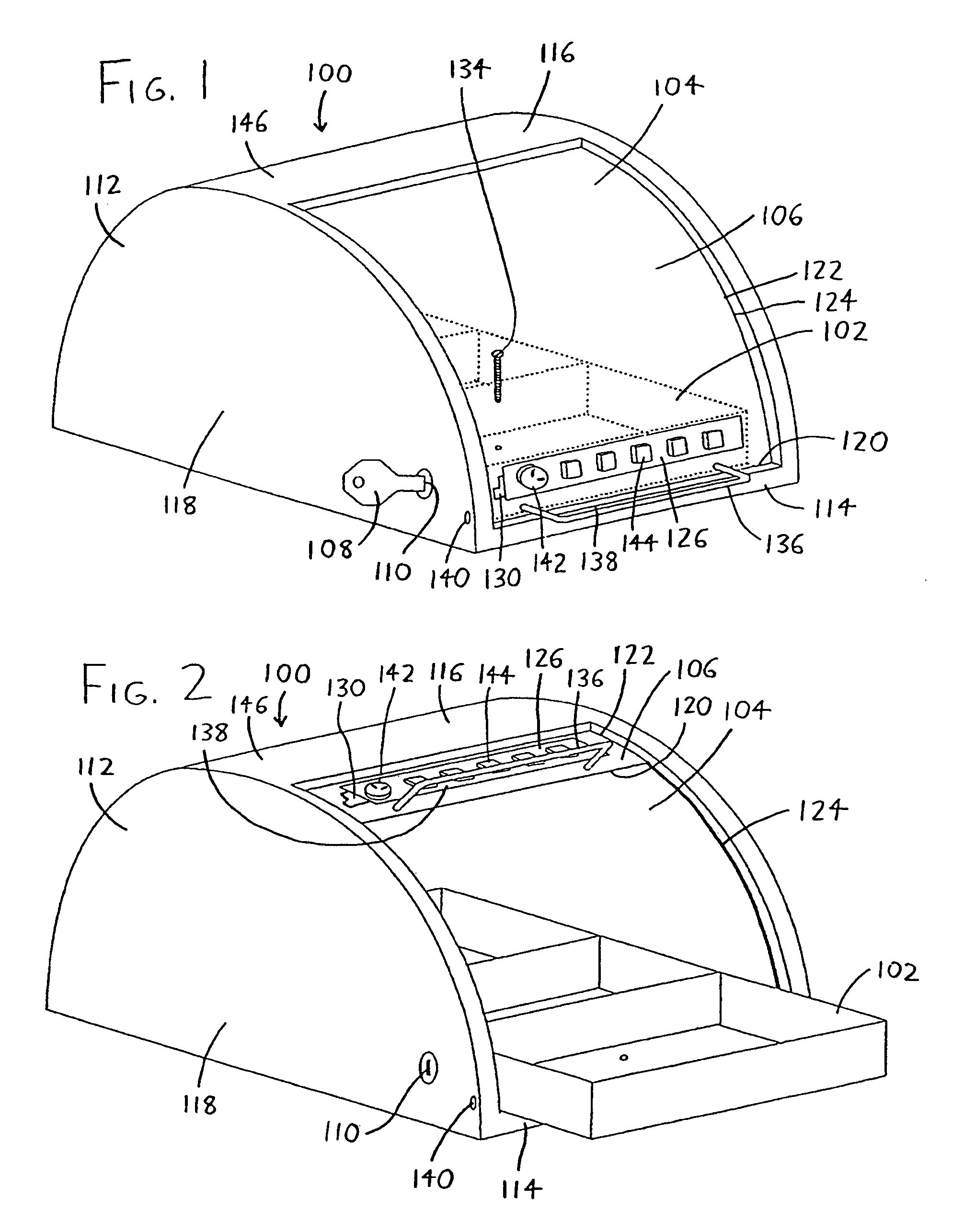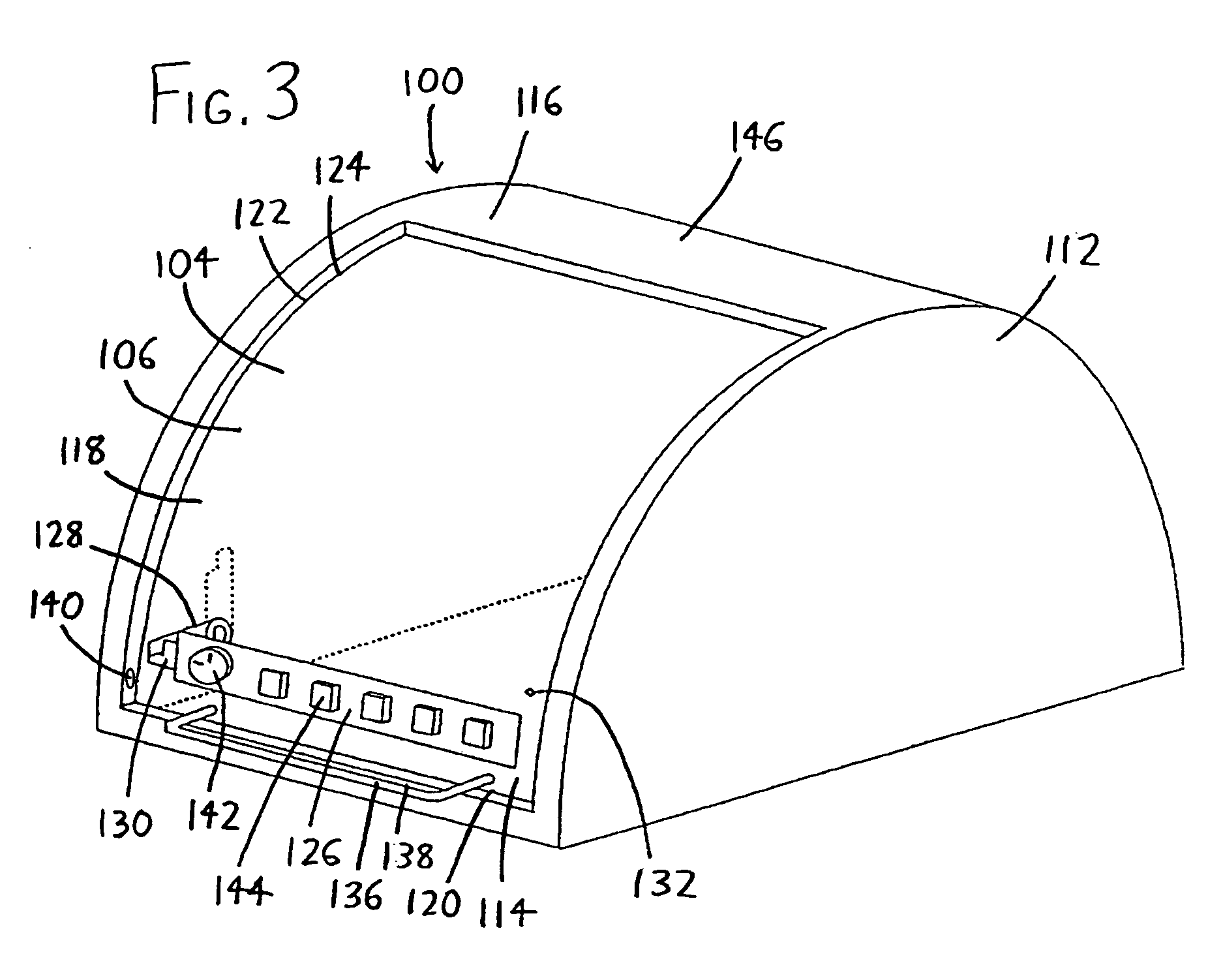[0006]Several features of the base unit 112 are beneficially adapted to enhance the use of the storage container 100 in a medical environment. First, the container base 114 is preferably sized with an area of less than approximately 2 square feet, and more specifically with a width of 12 inches or less between the sidewalls118, and with a depth of 24 inches or less in the transverse direction. This ensures that the container base 114 is relatively compact and can relatively easily fit atop a portion of a medical service cart (e.g., a nurse's or anesthesiologist's cart) while leaving space atop the cart for medical files, medical instruments, or other matter. The somewhat elongated shape of the container base 114, as opposed to a square base or the like, makes more efficient use of cart space by allowing the storage container 100 to extend along the edge of a cart's platform without extending overmuch into the central area of the platform. (Medical personnel often find it convenient to leave a central area of the cart platform free to accommodate tools for addressing whatever tasks are at hand, or to accommodate an open file so that the central area of the platform effectively serves as a mobile desktop for writing purposes, etc.)
[0007]Second, at least a major portion of the container top 116 is sloped such that the container top 116 cannot stably support an object having a flat base atop the container top 116 (i.e., the container top 116 is sloped such that when the storage unit is placed on a medical cart, objects such as files, when placed atop the storage container 100, will slide off, particularly when the cart starts or stops motion). This serves to deter users from stacking files or other matter atop the storage container 100, which is preferably left as visible and as free from obstruction as possible so that medicines stored therein can better be readily accessed when needed.
[0008]The container door 106 is then preferably formed of a single piece of at least substantially transparent rigid material, or is otherwise windowed so that it is at least substantially transparent over at least a major portion of its area. The container door 106 has opposing upper and lower edges (the lower edge 120 being particularly visible in FIG. 2), and opposing arcuately curved side edges 122 which extend between the upper and lower edges, and which are slidably engaged within grooves 124 defined in the container sidewalls 118. The container door 106 may slide in the grooves 124 between an open position (as in FIG. 2), wherein an opening is defined between the container door 106 and the base unit 112 to allow access to the container interior 104, and a closed position (as in FIGS. 1 and 3), wherein the container door 106 and the base unit 112 enclose the container interior 104. As can be seen in the drawings, the container door 106 presents a curved surface to the user which will not support the placement of objects thereon, and which also provides both a frontal and a top view of the medicines stored within the container 100, which is useful if personnel need to make a rapid visual assessment of the medicines therein. In contrast, a container door having a corner defined therein will tend to introduce an obstacle or distortion into the user's view, even if such corner is formed of transparent material. Additionally, the curvature of the container door 106 is preferably slightly different from the curvature of the grooves 124, whereby some degree of friction exists between the container door 106 and the base unit 112 (particularly when formed of plastic) so that the container door 106 will generally remain in the position to which it is opened without falling shut, and at the same time it will easily open and close.
[0009]The container door 106 is preferably latchable and lockable in its closed position so that medicines may be secured against theft or loss. Most preferably, the storage unit includes a latch which is engageable between the container door106 and the base unit 112, and wherein the latch has at least two separate modes of engagement and disengagement, such as by a key 108 insertable into one of the container door 106 and the base unit 112 for engaging and disengaging the latch, and also by a keyless entry means (e.g., a touchpad combination lock 126) for engaging and disengaging the latch without a key 108. This allows different modes of entry by different personnel, e.g., a pharmacist having a master key 108 may restock a group of storage containers, and the storage containers may then be distributed to nurses or other personnel, with each storage container 100 being openable by entering a combination (unique to
 Login to view more
Login to view more  Login to view more
Login to view more 


